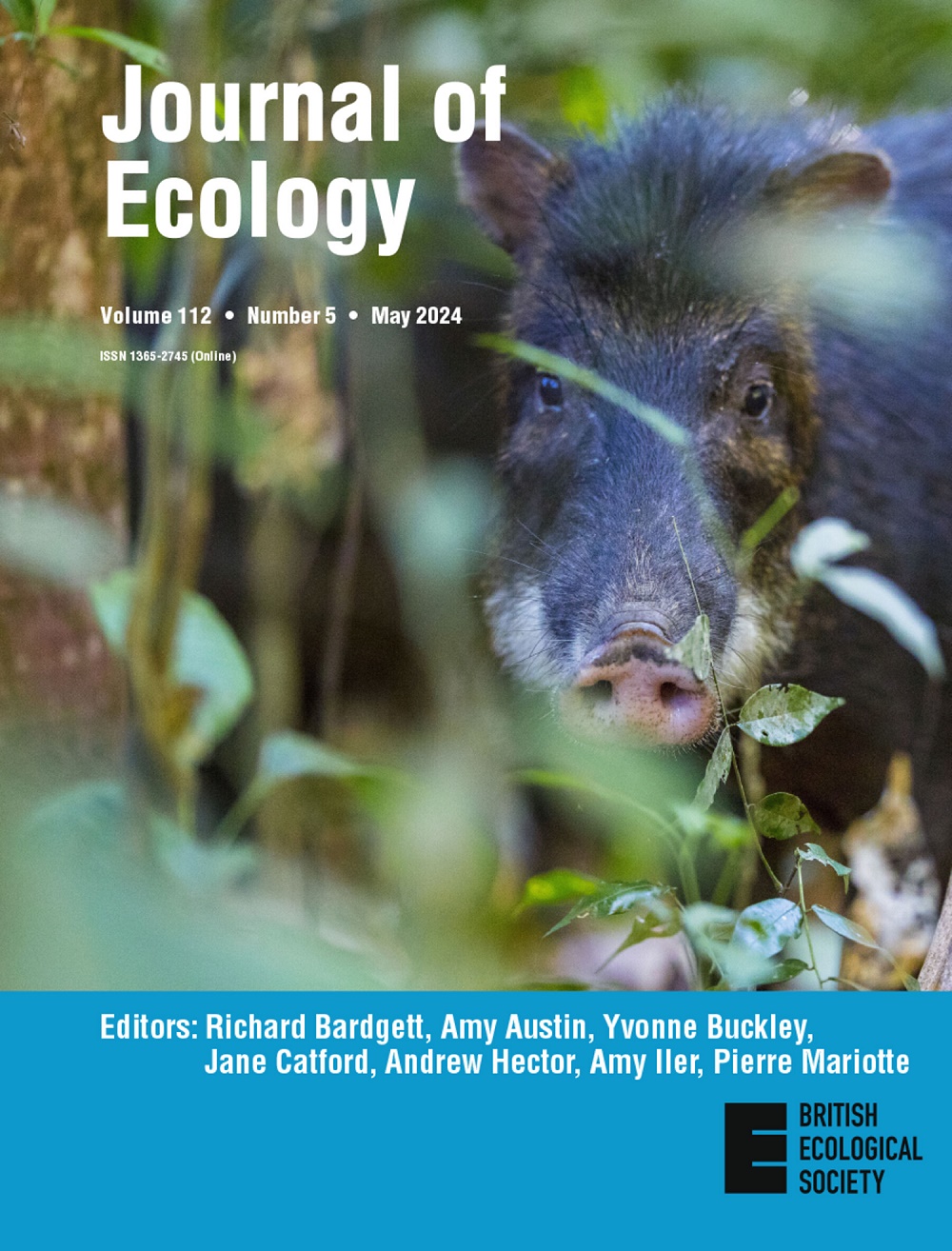Small disturbances and subsequent competition for light can maintain a diversity of demographic strategies in a neotropical forest: Results from model–data integration
IF 5.6
1区 环境科学与生态学
Q1 ECOLOGY
引用次数: 0
Abstract




小的干扰和随后的对光的竞争可以维持新热带森林人口统计策略的多样性:来自模型数据集成的结果
在演替过程中,光可用性的生态位分化通常被认为是树种共存的原因。由生长-生存和身高-招募权衡所代表的人口统计学光相关生态位,以及由人口统计学群体(慢、快、长寿命先行者、短寿命育种者和中间)捕获的生态位,已被证明在一个模型中准确地代表了巴拿马中部次生林和老生林的生物量动态。然而,这种参数化良好且准确的模型的简单机制是否足以支持人口群体在这些权衡中的长期共存,还有待检验。在这里,我们开发了一个模型来测试随机的、小尺度的间隙干扰和随后的光竞争是否能支持Barro Colorado岛森林动态图中观察到的人口群体的长期共存。具体而言,为了检验物种间的人口统计学差异是否促进了共存,我们将不同人口统计学群体参数化的生态位模拟模型与物种具有相同人口统计学参数的各种中性模型进行了比较。在探索了可能的招募参数化(一个难以测量的参数)的估计范围后,我们确定了几个参数化,其中沿生长-生存和身高-招募权衡轴的群体之间的差异有助于长期共存。我们发现间隙扰动对这些结果至关重要,这表明随着时间的推移,随后对光的竞争的差异为稳定生态位分化提供了机会。此外,产生稳定共存的参数化表现出连续的负密度依赖和真实的斑块内扰动后森林动态。合成。该模型-数据整合工作表明,在新热带森林中,小尺度干扰和随后的光竞争可能是沿生长-生存和身高-招募交换轴维持人口群体稳定多样性的重要力量。然而,这一结果仅适用于经验上合理的招聘参数的一部分,表明提高对招聘及其人口权衡的理解对于理解人口战略共存的重要性。
本文章由计算机程序翻译,如有差异,请以英文原文为准。
求助全文
约1分钟内获得全文
求助全文
来源期刊

Journal of Ecology
环境科学-生态学
CiteScore
10.90
自引率
5.50%
发文量
207
审稿时长
3.0 months
期刊介绍:
Journal of Ecology publishes original research papers on all aspects of the ecology of plants (including algae), in both aquatic and terrestrial ecosystems. We do not publish papers concerned solely with cultivated plants and agricultural ecosystems. Studies of plant communities, populations or individual species are accepted, as well as studies of the interactions between plants and animals, fungi or bacteria, providing they focus on the ecology of the plants.
We aim to bring important work using any ecological approach (including molecular techniques) to a wide international audience and therefore only publish papers with strong and ecological messages that advance our understanding of ecological principles.
 求助内容:
求助内容: 应助结果提醒方式:
应助结果提醒方式:


